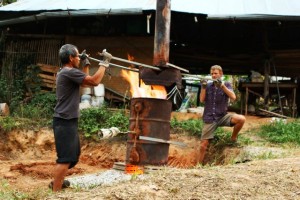Professor Sandy Cairncross raises concerns regarding Global Burden of Disease Study 2010 | Source: SHARE, Dec 14, 2012
The Global Burden of Disease Study 2010 (GBD 2010) was published in the Lancet on 13th December 2012 and is undeniably “a critical contribution to our understanding of present and future health priorities for countries and the global community“, in the words of Lancet Editor-in-Chief Dr Richard Horton. The GBD 2010 was developed by a Consortium led by the Institute of Health Metrics & Evaluation of the University of Washington. The collaboration of 486 scientists from 302 institutions in 50 countries, including SHARE Research Director Professor Sandy Cairncross, is the largest ever systematic effort to describe the global distribution and causes of a wide array of major diseases, injuries, and health risk factors. GBD 2010 takes the form of seven articles representing different aspects of the studies such as gender or age groups.
The Lancet summarises the key findings of GBD 2010 as follows:
The results show that infectious diseases, maternal and child illness, and malnutrition now cause fewer deaths and less illness than they did twenty years ago. As a result, fewer children are dying every year, but more young and middle-aged adults are dying and suffering from disease and injury, as non-communicable diseases, such as cancer and heart disease, become the dominant causes of death and disability worldwide. Since 1970, men and women worldwide have gained slightly more than ten years of life expectancy overall, but they spend more years living with injury and illness.
Whilst welcoming the new insights afforded by the new GBD 2010 estimates, Professor Sandy Cairncross and Dr Charlotte Watts have raised concerns about aspects of the GBD 2010 methodology in a comment piece in the Lancet. In particular, they flag the lack of rigorous consultation on the study’s strength of evidence and findings, and raise concerns about the GBD 2010 risk factor rankings being used to guide global health policy:
The risk factor rankings should be interpreted with caution. The results are an important starting point, but the process for future global assessments needs to be revisited. Fundamentally, a ranking cannot work if important risk factors for major health burdens are omitted. More broadly, a clearer consensus is needed on the criteria for inclusion of risk factors and health effects, and on strategies to overcome important data gaps.




